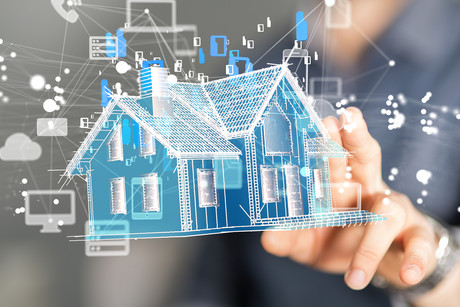Four design principles for running an energy-efficient home

How do you design a home with optimum energy efficiency? This question was recently answered by award-winning Australian architect Peter Maddison, who has partnered with RACV to design a small home packed with big ideas about running an energy-efficient space.
From interactive LG touch screens to solar panels with battery storage to smart security that can be monitored via a tablet, the home provides insight on what the Australian home could evolve into — on a tiny scale.
Below, Maddison shares some of his expert advice on how Australians can run a more energy-efficient home.
1. Seal up your building and insulate
Heating costs money to create. It’s an asset that you want to hang on to. Focus on sealing up leaks with good seals around all openable doors and windows and any other air leakage spots including exhaust fans, fire place flues and doggy doors left open.
Insulate, insulate, insulate. Floors, walls and ceilings that are well insulated are the best investment you’ll ever make.
2. Keep it small
Australia is building some of the biggest houses on average in the world, bigger even than in the United States. There is a common misconception that you’ll be happier in a bigger home, but my experience is that a happy family is one that interacts at all levels of the day, including washing dishes, eating and living in shared spaces.
The other aspect is that a smaller home will be more energy efficient. It’ll take less energy to heat and cool and less ongoing maintenance.
Think of all the time you’ll save from doing less housework.
3. Passive design
Passive design principles will reduce your energy consumption drastically. Passive design is where the design of a house utilises natural environmental attributes. For instance, simply understanding where the sun comes from and locating the windows correctly allows the sun to warm up your home. The sun can be controlled seasonally with well-designed eaves.
It’s also about having materials that acknowledge the power of the sun. For instance, a concrete slab in your living room absorbs the heat of the sun and will re-radiate that energy for hours after the sun goes down.
Consider also having high-level and low-level ventilation. As hot air rises it can be removed with high-level ventilation and replaced with fresh air from a lower level. This air movement ensures a comfortable living environment.
4. Active design
Active design systems refer to equipment and technology that can control your living environment with the touch of a button.
This could include solar power, solar hot water and heat recovery systems. There are also several mobile phone apps that can activate your home security or lighting. With these you can even start a home heater, turn on the lights and have a look at what your dog is up to — all while making your way home on the train.
A concrete use for carpet fibres
Australian engineers have come up with an unexpected use for discarded carpets: as a means to...
COP29: finance, a "crucial" opportunity and a seat at the table
Leaders and diplomats from around the world are descending on Baku, Azerbaijan, this month for...
Spacious, sturdy and relocatable: steel site office ticks all the boxes
When looking for a new office design, green steel company InfraBuild enlisted Modulate — a...









